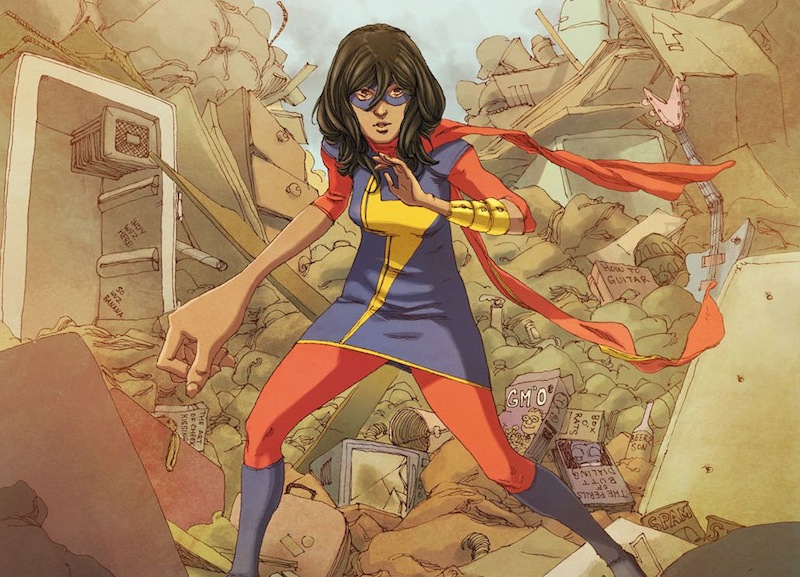I didn’t mean to fall into comics at the beginning of 2015, but sometimes that’s just the way the wind blows. And these comics, hailing from France, Italy, Cyprus, and America, traverse the whole world, entering unexpected longitudes and latitudes.
Intriguingly, the content that takes the reader into far-flung corners of the globe reflects the authors’ own travels and lineages: Squarzoni, a French graphic novelist who worked in ex-Yugoslavia, has traveled through Mexico, Palestine, and Israel as a human-rights observer and has published work on Central American politics and the Holocaust; the Italian, Hugo Pratt, inducted in 2004 to the Will Eisner Hall of Fame, lived in Argentina, London, Italy, Switzerland, and France, while also traveling Patagonia, Canada, and Africa; Wilson is an American who lived and worked for a time in Cairo; Hoplaros grew up in Zimbabwe before moving back to her home-country, Cyprus; and Sattouf, who used to write for Charlie Hebdo, is a French-Syrian who spent his childhood in Algeria, Libya, and Syria. With well-traveled captains like these at the helm, you know you’re in for a rip-roaring ride.
Climate Changed: A Personal Journey through the Science
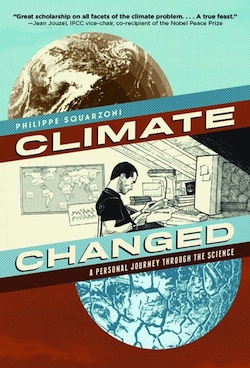 Philippe Squarzoni’s devastating take on climate change and its affect on our future is a difficult, sobering read. At almost 500 pages long, this methodical award-winning graphic novel melds superb scholarship and art to explain exactly how we have changed the make-up of our earth’s atmosphere, all the while interspersed with intimate moments in the novelist’s own life. It’s hard not to come up from the book gasping for air between chapters, now fearful that all those eco-scifi novels you read last year are actually less scifi and more like glimpses of an all-too-real cataclysmic future.
Philippe Squarzoni’s devastating take on climate change and its affect on our future is a difficult, sobering read. At almost 500 pages long, this methodical award-winning graphic novel melds superb scholarship and art to explain exactly how we have changed the make-up of our earth’s atmosphere, all the while interspersed with intimate moments in the novelist’s own life. It’s hard not to come up from the book gasping for air between chapters, now fearful that all those eco-scifi novels you read last year are actually less scifi and more like glimpses of an all-too-real cataclysmic future.
But Climate Changed is worth it, not least because Squarzoni succeeds in explaining, visualizing, and embedding in the reader’s mind the complexity of our planet’s climate system and its climate history. More than that though, his own recurring question on how to begin that picks up like a poem’s refrain throughout the book, resonates on many levels: How do writers begin books? Especially about issues like this one? How do narratives find endings? How do we begin a new way of living on our planet? How do we begin and end chapters in our history? Earth and its transformation loom large in Squarzoni’s exploration, even as it returns to the small and individual story of his own experience. Originally published in French in 2012, Climate Changed is an example of the non-fiction graphic novel at its best.
Corto Maltese: Under The Sign of Capricorn
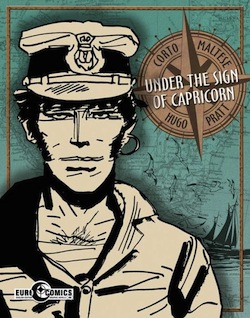 Translated into 15 different languages and much-loved throughout Europe, Corto Maltese finally gets its proper English due. IDW’s new imprint EuroComics has taken on the enormous task of translating Hugo Pratt’s singular comic series into 12 volumes, the first of which, Under The Sign of Capricorn came out on December 30th. Corto Maltese is a cult Italian/French comic from the 70s and 80s starring the eponymous hero: a gruff sailor with a highly attuned moral compass who goes on adventures across the world, entangling himself in a multitude of exotic and mystical escapades. Pratt’s tour de force is renown for his fastidious attention to cultural and historical detail as well as the many real characters Pratt introduces to Corto’s exploits, from Jack London to Joseph Stalin. Weaving in real-life events and people into Corto’s colorful adventures, Pratt created a comic and comic-hero that acknowledge our intricate world of cultures and politics but refuse to be bound by it.
Translated into 15 different languages and much-loved throughout Europe, Corto Maltese finally gets its proper English due. IDW’s new imprint EuroComics has taken on the enormous task of translating Hugo Pratt’s singular comic series into 12 volumes, the first of which, Under The Sign of Capricorn came out on December 30th. Corto Maltese is a cult Italian/French comic from the 70s and 80s starring the eponymous hero: a gruff sailor with a highly attuned moral compass who goes on adventures across the world, entangling himself in a multitude of exotic and mystical escapades. Pratt’s tour de force is renown for his fastidious attention to cultural and historical detail as well as the many real characters Pratt introduces to Corto’s exploits, from Jack London to Joseph Stalin. Weaving in real-life events and people into Corto’s colorful adventures, Pratt created a comic and comic-hero that acknowledge our intricate world of cultures and politics but refuse to be bound by it.
I can guarantee that Corto Maltese will quickly become one of your most beloved protagonists, especially when he’s pushing against the outlandish story-lines Pratt sets up as though he, Corto himself, is a free agent, not bound by the author’s rules, often refusing to engage in suspension of disbelief with a biting wit. It’s his friends, particularly Professor Steiner, who reel him and the reader back in to a great story: “Don’t be so cynical,” Steiner teases, “At heart you’d like to believe in fairy tales. Otherwise why do you always end up embroiled in situations that you can avoid by simply looking the other way?” And let’s face it, we want to believe in fairy tales too. So be delighted, Anglophone readers, for Pratt’s tales are like coming home to an entire oeuvre of fables you’ve never known existed but have always been waiting to read. Dive in.
Ms. Marvel
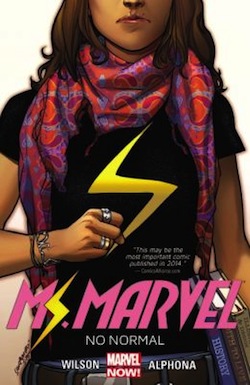 G. Willow Wilson, perhaps better know in these Tor.com circles for her lauded debut novel Alif the Unseen, is well-versed in the writing of comics. Her latest foray is the rebooting of the shape-shifting Ms. Marvel, which features a Muslim woman protagonist: teenager Kamala Khan, a Pakistani-American. Kamala is introduced as a teen stuck between the conservative regime of her family and her white, party-going high-school. Using Kamala’s desire to just be “normal,” Wilson and artist Adrian Alphonso beautifully reclaim the narrative of the side-lined protagonist unexpectedly turning into a superhero and having to deal with that transformation. It is an absolute joy to see the familiar tropes of a superhero origin story incorporate race and religion, not just as tokens, but as significant story-holders and an emotive part of character development.
G. Willow Wilson, perhaps better know in these Tor.com circles for her lauded debut novel Alif the Unseen, is well-versed in the writing of comics. Her latest foray is the rebooting of the shape-shifting Ms. Marvel, which features a Muslim woman protagonist: teenager Kamala Khan, a Pakistani-American. Kamala is introduced as a teen stuck between the conservative regime of her family and her white, party-going high-school. Using Kamala’s desire to just be “normal,” Wilson and artist Adrian Alphonso beautifully reclaim the narrative of the side-lined protagonist unexpectedly turning into a superhero and having to deal with that transformation. It is an absolute joy to see the familiar tropes of a superhero origin story incorporate race and religion, not just as tokens, but as significant story-holders and an emotive part of character development.
More than that though, the reality of second and third-generation kids as entirely American, and the reality of the diversity in Islam in America alone is laid bare in the very first pages of Marvel’s latest series. From Khan’s Turkish-American best friend who chooses to wear a headscarf despite her father’s disapproval, to Kamala’s experiences of frustration in the mosque, to established Marvel heroes speaking Urdu, Wilson and Alphonso don’t let nuance slip through their fingers. They’ve opened up a whole new perspective to the Marvel universe and Ms Marvel 1: No Normal, is the perfect introduction to it.
The Sign Maker
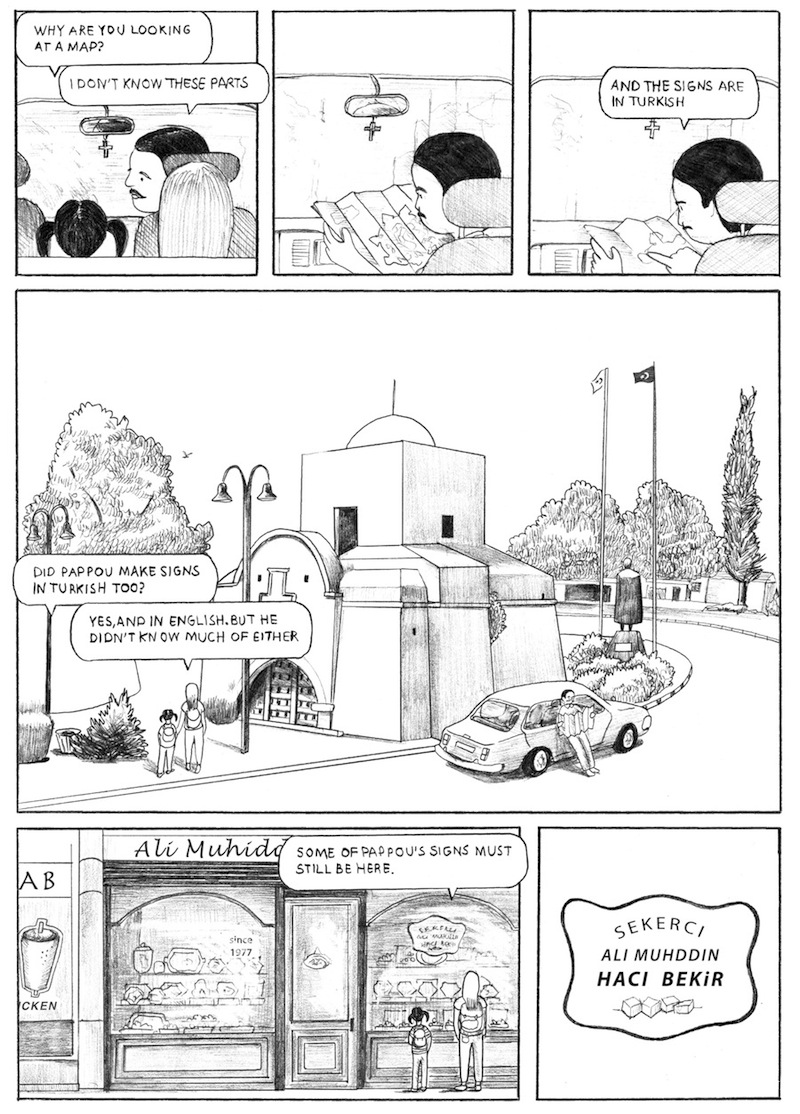 Meanwhile, in Cyprus, Miranda Hoplaros and Lara Alphas team up to create a short but ambitious graphic novel entitled The Sign Maker. The story is ostensibly told by a young mother to her daughter about her pappou—grandfather — Laki Gabriel. Laki is a Greek-Cypriot who immigrates to South Africa and then Rhodesia in the late 1960s, working throughout as the book’s eponymous sign maker. Through his signs, written in a whole host of languages including Greek, Turkish, English and Afrikaans, Hoplaros unfolds the histories of both regions in some of their most critical times. As Cyprus is divided into two by Turkey following a local coup, Zimbabwe’s War of Liberation and the fall of Rhodesia is ongoing. Lakis and his family have to navigate their lives and movements through the tumultuous 1970s.
Meanwhile, in Cyprus, Miranda Hoplaros and Lara Alphas team up to create a short but ambitious graphic novel entitled The Sign Maker. The story is ostensibly told by a young mother to her daughter about her pappou—grandfather — Laki Gabriel. Laki is a Greek-Cypriot who immigrates to South Africa and then Rhodesia in the late 1960s, working throughout as the book’s eponymous sign maker. Through his signs, written in a whole host of languages including Greek, Turkish, English and Afrikaans, Hoplaros unfolds the histories of both regions in some of their most critical times. As Cyprus is divided into two by Turkey following a local coup, Zimbabwe’s War of Liberation and the fall of Rhodesia is ongoing. Lakis and his family have to navigate their lives and movements through the tumultuous 1970s.
The text is sparse in The Sign Maker and often times it is Alphas’ soft, detailed, pencil drawings alone that carry the narrative forward, with a keen attention to locations and history. Hoplaros’ and Alphas’ creation may well be the first graphic novel to emerge from Cyprus. It is a heartfelt attempt to untangle part of Cypriot emigration’s complicated narrative, exploring rarely visited trajectories into Southern Africa.
The Arab of the Future
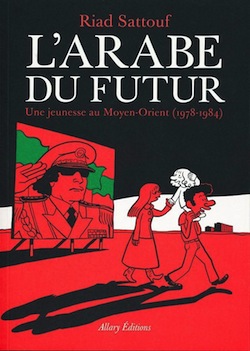
M Lynx Qualey notes that Riad Sattouf’s The Arab of the Future is being released in English this May after a very successful run in its French original, L’Arabe du Futur. Sattouf’s first English publication is coming out with Henry Holt & Co who describe it thusly:
“In striking, virtuoso graphic style that captures both the immediacy of childhood and the fervor of political idealism, Riad Sattouf recounts his nomadic childhood growing up in rural France, Gaddafi’s Libya, and Assad’s Syria—but always under the roof of his father, a Syrian Pan-Arabist who drags his family along in his pursuit of grandiose dreams for the Arab nation.
Riad, delicate and wide-eyed, follows in the trail of his mismatched parents; his mother, a bookish French student, is as modest as his father is flamboyant. Venturing first to the Great Socialist People’s Libyan Arab State and then joining the family tribe in Homs, Syria, they hold fast to the vision of the paradise that always lies just around the corner. And hold they do, though food is scarce, children kill dogs for sport, and with locks banned, the Sattoufs come home one day to discover another family occupying their apartment. The ultimate outsider, Riad, with his flowing blond hair, is called the ultimate insult… Jewish. And in no time at all, his father has come up with yet another grand plan, moving from building a new people to building his own great palace.
Brimming with life and dark humor, The Arab of the Future reveals the truth and texture of one eccentric family in an absurd Middle East, and also introduces a master cartoonist in a work destined to stand alongside Maus and Persepolis.”
Alex Mangles lives in the Levant and is confident that she’ll discover the lost city of Atlantis any day now. She tweets from @alexantra.










